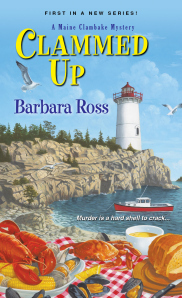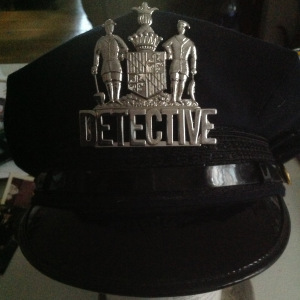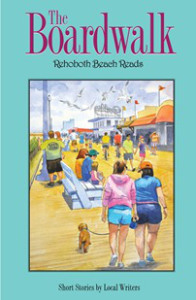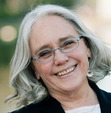Edith Maxwell's Blog, page 276
September 25, 2014
Maine Clambake Series Renewed!
by Barb, in Somerville, MA, where it’s indisputably fall
We Wicked Cozies have a tradition of announcing good news here on the blog. Julie Hennrikus announced her new Clock Shop Mystery series. And more recently, both Edith Maxwell and Liz Mugavero shared happy news with our readers.
I’m thrilled to announce that my Maine Clambake Mystery series has been extended for books 4, 5 & 6. I’m excited about this because I have so many more stories to tell about the Snowden family, Morrow Island and Busman’s Harbor, Maine.
The planned books take place in late fall, winter and early spring–or as we call them in Maine, in winter, winter and more winter. The resort town of Busman’s Harbor is very different in the off season.
The books are tentatively titled Fogged In, Iced Under and Elvered After.
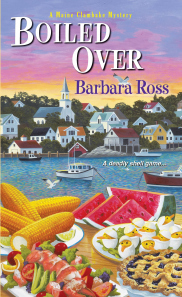 In Fogged In, the body of a stranger appears in the walk-in refrigerator of Gus’s restaurant. And we all know how Gus feels about strangers in his restaurant, much less dead ones. When the body yields no ID, Julia must help the police uncover the man’s identity and the mysterious reason for his visit to Maine.
In Fogged In, the body of a stranger appears in the walk-in refrigerator of Gus’s restaurant. And we all know how Gus feels about strangers in his restaurant, much less dead ones. When the body yields no ID, Julia must help the police uncover the man’s identity and the mysterious reason for his visit to Maine.
In Iced Under, Julia investigates her maternal ancestry and the disappearance of her mother’s cousin Hugh, who left Morrow Island on the eve of his twenty-first birthday and disappeared. She discovers some dark truths about her mother’s family that lead her to a modern-day case of murder.
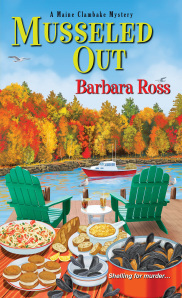 In Elvered After, a man is murdered in one of the Victorian bedrooms of the Snuggles Inn. He’s a Maine state official in town to regulate the local catch of elvers, the tiny, translucent baby eels that bring Maine fishermen as much as $2600 a pound and are sold to Asian farms to be raised for sushi. With high stakes, a short season, a limited number of highly-prized licenses and finite fishing grounds, the elver fishery provides plenty of suspects and reasons for murder. (I’m sure the publisher won’t let me keep the title because no one knows what elvers are, but it’s kind of perfect, isn’t it?)
In Elvered After, a man is murdered in one of the Victorian bedrooms of the Snuggles Inn. He’s a Maine state official in town to regulate the local catch of elvers, the tiny, translucent baby eels that bring Maine fishermen as much as $2600 a pound and are sold to Asian farms to be raised for sushi. With high stakes, a short season, a limited number of highly-prized licenses and finite fishing grounds, the elver fishery provides plenty of suspects and reasons for murder. (I’m sure the publisher won’t let me keep the title because no one knows what elvers are, but it’s kind of perfect, isn’t it?)
I’m working on Fogged In now, and can’t wait to find out what happens!
It’s hard to believe how much has happened since the first book in the series, Clammed Up, was published a year ago this month. Thank you for a wonderful year to friends, family, and Maine Clambake Mystery fans. I’ve been so honored by the reception these stories have found and hope you will enjoy the new books.
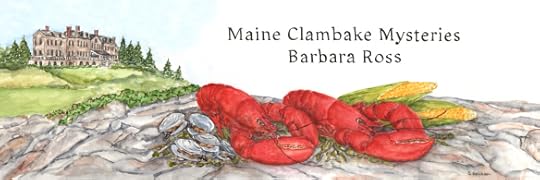
Filed under: Barb's posts Tagged: boiled over, clammed up, Elvered After, Fogged In, Iced Under, Maine Clambake Mystery, musseled out

September 24, 2014
Wicked Wednesday: SINC-Up, part two
Sisters in Crime is sponsoring a September SINC-Up, to spread the good word about good books and their authors. They suggested a few questions, so we selected one for last week and one for today. Part of the challenge is also to link to another author’s or authors’ blog, so each of us is doing that, too. The guidelines are here, if you’d like to take part. Just be sure to tweet your link using the hashtag #SinC-up or #SinCBlogHop and include @SINCnational.
The question for today:
What’s the best part of the writing process for you? What’s the most challenging?
Barb: Okay, I’ll go first. As I’ve said here before. I hate first drafts. Hate them. If I could figure out how to do the writing process without them, I would. They put me into a total vortex of self-doubt–every single time. “This is a short story idea. At best a novella. This will never be novel length.” “I know the beginning and the end, but I honestly don’t think you can get from here to there.” “This is boring, boring, boring. And stupid.” Etc. But give me something to revise, no matter how crude, and I am happy, happy happy. I can work all day. And short story or novel, I’ll happily work through a dozen or more drafts. I also love the “pre-writing phase” when all things are possible. So everything but the first draft.
For blogs, I want to recommend the Writers Who Kill blog. E.B. Davis has interviewed me twice, once for Clammed Up and once for Boiled Over. She asks such great questions. She always makes me think in new ways about my characters. The other posts and interviews are high quality, too.
Julie: Boy, this is tough for me. The entire process is a terrible joy. I do like the plotting/noodling stage. And I plot ahead of time, so it takes some time. But having just gone through the process (and am awaiting for notes from my editor), I would say I enjoy the first draft. I love the feeling when it all starts clicking, and the book surprises me. Or a character tells me a secret that helps shape the book.
My blog hop for this week is our New England chapter of SInC’s blog–Pen, Ink, and Crimes. There are lots of contributors to the blog, which makes it fun. And Hank Phillippi Ryan has been doing series of interviews that are just terrific.
Edith: I love “terrible joy” – Julie, that’s brilliant.
 Sherry: Sometimes I have a hard time forcing myself to sit in the chair and type. I’m easily distracted. Lunch with friends? Sure. Laundry? Sure. Time to walk Lily? Sure. Dusting? No — I have to draw the line somewhere. I think part of the forcing myself to sit is what Barb experiences with the first draft — the editor in my head telling me it’s all terrible. Last week I started writing Murder As Is the third in the Sarah Winston Garage Sale Series. I typed a line and a half and my computer froze. When I rebooted it, all that was there was the title. I figured the line was so bad even my computer couldn’t stand it.
Sherry: Sometimes I have a hard time forcing myself to sit in the chair and type. I’m easily distracted. Lunch with friends? Sure. Laundry? Sure. Time to walk Lily? Sure. Dusting? No — I have to draw the line somewhere. I think part of the forcing myself to sit is what Barb experiences with the first draft — the editor in my head telling me it’s all terrible. Last week I started writing Murder As Is the third in the Sarah Winston Garage Sale Series. I typed a line and a half and my computer froze. When I rebooted it, all that was there was the title. I figured the line was so bad even my computer couldn’t stand it.
My blog hop is Carstairs Considers. Mark not only does book reviews but also TV shows and Hallmark ornaments. It’s fun to read and he is a thoughtful book reviewer.
Jessie: I love to tear into a second draft and start revising. I find it so satisfying to play with the raw material and to coax it into the thing I really want it to be. I wish I loved first drafts as much. I don’t think I hate them as much as Barb but it I do find them a bit of a slog. Planning scenes before I start to write helps to keep my internal editor at bay but sometimes he scrambles over all my carefully constructed barriers anyway.
My blog recommendation this week is Live to Write, Write to Live, featuring our own Julie Hennrikus. The posts are insightful and the writers are engaging.
Julie: Thanks Jessie!
Edith: For me the magical part is when characters do something I didn’t expect. I’m typing away on a first draft, or in revision, and bingo, a woman falls off her chair. I stare at her in my mind, on the page, and think, “Whoa, she just fell off her chair. Why’d she fall off her chair? Did she have a heart attack? Vertigo? Was she poisoned? Is she faking it? And I WROTE IT. It doesn’t always happen, but it’s so special when I’m just channeling my characters.
The most challenging for me is surprising the reader while still being fair to her. I want you to catch your breath at the end, but I can’t drop it on you all at once – when you go back, you have to be able to realize that the clues were there all along. This is a very tricky thing to pull off, and I’m still working on it.
For blogs: gee, agree about all of the ones already mentioned, of course. I’ll recommend Ramona DeFelice Long’s blog on editing. If you go back through her archives, there are fabulous instructive posts for writers.
Readers: add your response!
Filed under: Wicked Wednesday Tagged: Carstairs Considers, distractions, EB Davis, first drafts, Live to Write Write to Live, Writers Who Kill, writing process

September 23, 2014
Guest: Janet Cantrell
Edith, on the second day of fall
We’re delighted to welcome our friend Kaye George/Janet Cantrell to the blog today. 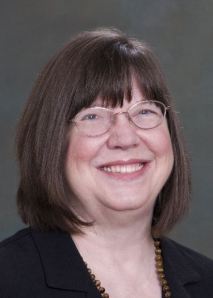 Kaye (which is already a pen name, apparently) is a past president of the Guppies, is the bestselling and Agatha-nominated author of four series, plus short stories, and is a super friendly, super generous person – and obviously super productive, too! Take it away, Janet, and welcome to the slash name club.
Kaye (which is already a pen name, apparently) is a past president of the Guppies, is the bestselling and Agatha-nominated author of four series, plus short stories, and is a super friendly, super generous person – and obviously super productive, too! Take it away, Janet, and welcome to the slash name club.
Me? A Cozy Author?
I never thought I’d be a cozy writer. My first attempts at writing, for years and years, were aimed at Serious Literature. Deep themes, delving into the depths of the dark soul of man. With alliteration.
One day I decided I wanted to stop collecting rejection slips and get published. My favorite reading was mystery, so I turned to that. Not cozies, though, more like traditional Agatha Christie and Nero Wolfe stuff. After a mere ten years and hundreds of rejections, I had success getting some of those published. I’m very proud of each and every one, too.
But there were those adorable, cute cozy covers in the bookstores. And prominent placing. So after another mere two years of pretty much continuous effort and lots more rejection, I secured a contract for the Fat Cat cozy series! To be honest, at this moment, this is the top of my Mount Everest. I submitted my traditional, humorous mystery, CHOKE, to the woman who is now my agent (after submitting many proposals previously). Kim Lionetti read it and liked my voice. During the phone call that cemented our relationship, she asked if I could write a cozy, because CHOKE is not a cozy, despite what some reviews have said. I assured her I could.
But could I? I was very careful to keep on the cozy track writing FAT CAT AT LARGE. These are the differences I noticed between writing a cozy and writing other mystery types.
The murder. Blood can be mentioned, but not vividly described and not dwelt upon. The body has to be there, of course, but more gruesome murder methods are to be avoided. In SMOKE, the victim was found hanging in the smokehouse on a meathook, naked. That would never do for a cozy. The body in the first in this series is merely lying on the floor with a knife sticking out of his chest.
The sex. My editor has been reining me in. She wants it to go very slowly. In fact, it’s not sex, it’s a romance. A slowly budding romance with lots of hurdles thrown in the way. Of course, I would throw those in anyway, but two characters might reach a passionate kiss a lot earlier.
The sleuth. Chase Oliver, the sleuth in FAT CAT is somewhat older than my other sleuths. Cressa Carraway, of EINE KLEINE MURDER, is in grad school. Imogene Duckworthy is in her very early twenties. But Chase is in her early thirties. She’s not going to be as flighty as the other two and will have the acumen to co-own a business, although she feels overshadowed by her much older partner, Anna Larson, at times. Chase has had better sense in the past than either Cressa or Immy, too. She hasn’t gotten pregnant by a nameless trucker and hasn’t gotten into a relationship with an abusive married man. True, she had a bad romance, but not as bad as my other characters.
The Point of View. I think cozies mostly stick to first person throughout. I feel pretty free to add other points of view in my traditional and my Neanderthal stories.
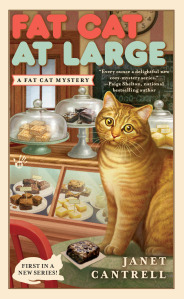 The jeopardy. Here, the genres converge more closely. I do believe in putting my character up a tree and throwing stones. After all, the sleuth has to deal with a murderer—has to uncover the culprit, and that’s dangerous business.
The jeopardy. Here, the genres converge more closely. I do believe in putting my character up a tree and throwing stones. After all, the sleuth has to deal with a murderer—has to uncover the culprit, and that’s dangerous business.
My dream was fully realized when I saw the cover of my cozy book. I couldn’t ask for anything better. I love all my other covers, but this one is totally a “cozy” cover, with the most adorable cat in the world.
Readers: Any other thoughts on what makes a cozy a cozy? Or do you disagree with any of mine?
Janet Cantrell is a pen name for Kaye George, Agatha nominated novelist and short story writer. She belongs to Sisters in Crime, Guppies, and Austin Mystery Writers. Her cozy Fat Cat mystery series debuted in September with the national bestseller, FAT CAT AT LARGE, featuring Quincy, a pudgy, adorable cat who is an accomplished escape artist. Especially when he’s on a diet and hungry. Leave it to Quincy to lead his human, Chase, co-owner of a Minneapolis dessert bar shop, into trouble. Janet lives in Knoxville, Tennessee with her husband. Her recently departed feline, Agamemnon, is a source for some of Quincy’s antics. Visit http://janetcantrell.com/ for more details. She blogs at: http://janetcantrell.blogspot.com/
Filed under: Guest posts Tagged: Barking Rain Press, Berkley Prime Crime, Eine Kleine Murder, Fat Cat at Large, Janet Cantrell, Kaye George

September 22, 2014
What To Bring With
Edith, writing furiously north of Boston on the Equinox
Ya can’t take it with you, isn’t that what they say? Well, I have learned that if I don’t take it with me, I’m in trouble. Specifically, what I bring along when I go sell books in public. So this post (by request from none other than Hank Phillippi Ryan) is all about being prepared to go sell books.
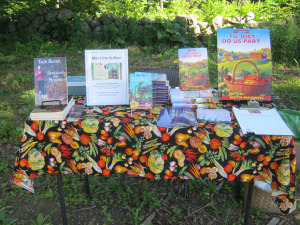 I sell books at libraries. I sell them at farmers’ markets. I sell them out of the trunk of my car, quite literally. At author expos, at historical societies, at road races. And I’ve assembled a kit of what to bring. I might not use it all, but I’m ready.
I sell books at libraries. I sell them at farmers’ markets. I sell them out of the trunk of my car, quite literally. At author expos, at historical societies, at road races. And I’ve assembled a kit of what to bring. I might not use it all, but I’m ready.
Books. Yes, books. Once I was astonished to see that I’d brought only two copies of my latest release. Yikes! I was all ready to take people’s money upon a promise to send them a signed book the next day, but I didn’t need to. Just. So now I always keep a full box of all my books in my car.
Signage. I finally got a table-sized banner made. It wasn’t expensive, and my
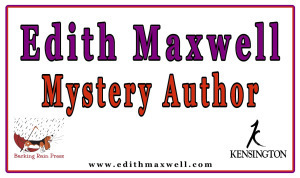 local party store made it up to my specs. My publisher also prints up my cover every year into a self-standing poster, so I bring the latest one. And I have several home-printed signs in a clear stand with a graphic, my name, Mystery Author, and a few other details. Clear large print and uncluttered display, so people can read it as they drift by.
local party store made it up to my specs. My publisher also prints up my cover every year into a self-standing poster, so I bring the latest one. And I have several home-printed signs in a clear stand with a graphic, my name, Mystery Author, and a few other details. Clear large print and uncluttered display, so people can read it as they drift by.Tablecloth. I write a farm-based series, so I found this gorgeous vegetable cloth (see first picture) and hemmed it up. But even a clean plain white cloth dresses up a market table.
Table. Ah, yes, the table. I found a four-foot table at Staples. It’s easy to assemble, folds in a snap, and isn’t too heavy or too long to hoist in and out of my small car.
Chair. I bring a folding chair, unless the facility provides it (also see Table). But I rarely sit. It’s a lot easier to draw customers in if I stand. And yes, my feet hurt at the end of the two- or three- or five-hour period.
Book stands. Right now I have a mish-mash. I like the black wire one best for not tipping over, but it
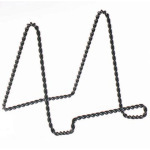 doesn’t collapse. Still experimenting. I hear the Container Store has a great selection. I got mine at Joann’s Fabrics in their craft section.
doesn’t collapse. Still experimenting. I hear the Container Store has a great selection. I got mine at Joann’s Fabrics in their craft section.Bookmarks. Some print up postcards. I prefer bookmarks, one per series.I also bring business cards, because they have my email address on them, but I give them out less often. Even when someone stops by my table who is interested but clearly not going to buy, I hand them a bookmark. They’re a big hit with kids, and who knows? Maybe their grandmother, who loves mysteries, will see the bookmark and check out who that nice author was.
Email signup sheet. I print out a signup sheet, securing it on a clipboard, and
 invite anybody – everybody! – to sign up for my quarterly (or so) newsletter, making sure they know I never sell, loan, or rent my address list.
invite anybody – everybody! – to sign up for my quarterly (or so) newsletter, making sure they know I never sell, loan, or rent my address list.Suitcase. I use a small suitcase I already had. I know Jessie found a cool piece of luggage (designed for a salesperson, I believe) that has all kinds of cool pockets and slots, and is the perfect size for mass-market paperbacks. My suitcase fits the books, the table cloth, most of the signage, and the tool kit.
Tool kit.This cute metal carrot lunchbox, which someone gave me a birthday present in, holds many useful items, including all of the
 following: Square reader so I can take credit
following: Square reader so I can take credit
 cards. Spare cash for change. Bookmarks. Business cards. Tape. Pens. Ribbon to tie my banner on with. Extra pens. Clips. Other clips. Paper clips. A tiny flashlight. Camera. Little scissors. I think it’s infinitely expandable. And it’s not crushable.
cards. Spare cash for change. Bookmarks. Business cards. Tape. Pens. Ribbon to tie my banner on with. Extra pens. Clips. Other clips. Paper clips. A tiny flashlight. Camera. Little scissors. I think it’s infinitely expandable. And it’s not crushable.So that’s my go-to-market/library/wherever list. Which only works when I’m driving to an event, of course. I find it refreshing to sell at a bookstore, because then they have the books, the table, the signage, sometimes even the tablecloth. I only bring the tool kit and maybe a sign. But extra books? Always in the back of the car. When I fly, I still bring the tool kit and a few extra books, and ship books ahead if I have to.
Readers: What do you take to author events? Or to a craft show, trade show, or other kind of event? Any additions to my list? Any good stories about when you forgot that once crucial thing? What kind of displays attract your eye?
Filed under: Craft, Edith's posts Tagged: author event, bookmarks, hank phillippi ryan, mystery, Square reader

September 19, 2014
Guest Arlene Kay
Edith, north of Boston
We’re pleased to welcome Arlene Kay, our fellow New England Sister in Crime, to the blog 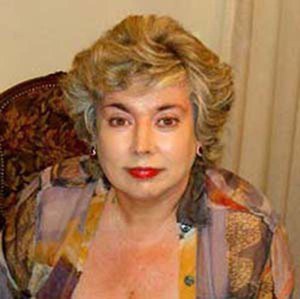 today. Listen to what this author who does NOT write cozies has to say.
today. Listen to what this author who does NOT write cozies has to say.
Sister Act
At first blush, cozy mysteries and romantic suspense resemble sparring siblings rather than members of the same genre. The proper cozy eschews depictions of sex while arching a disdainful brow at her uninhibited sister. Romance lovers often dismiss cozies as inhibited relics of a Puritan past. As a writer (and fan) of both sub-genres, I submit that while the antics and locales may vary, the underlying themes of cozy mysteries and romantic suspense are remarkably similar.
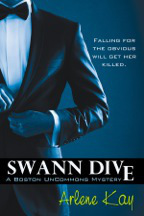 My Swann series is a case in point. Three of the novels take place in Boston; one is based on Cape Cod. Although the vibe is big-city snarky with a dollop of sex, the focus is clearly on friendship, family loyalty, betrayal and the tug of war between law and justice. These same issues permeate cozy mysteries from Christie to contemporary authors. Their timelessness provides enjoyment and a sense of satisfaction to a wide swath of readers.
My Swann series is a case in point. Three of the novels take place in Boston; one is based on Cape Cod. Although the vibe is big-city snarky with a dollop of sex, the focus is clearly on friendship, family loyalty, betrayal and the tug of war between law and justice. These same issues permeate cozy mysteries from Christie to contemporary authors. Their timelessness provides enjoyment and a sense of satisfaction to a wide swath of readers.
One final observation: Character and plot, not technical mumbo jumbo, are core components of both cozy and romantic suspense novels and indeed of all good writing. If a book lacks compelling characters or a logical plot it is a husk, an empty shell that pleases no one. Both sub-genres typically serve up a cast of sidekicks who supplement the skills of the heroine or fill in the gaps. These reflection characters also serve an important function: they are free to  express the emotions of the reader. How many times have you yearned to throttle the hero who plunges into a situation fraught with danger or makes a serious blunder? Sidekicks have no problem stating the obvious question. “Are you crazy?”
express the emotions of the reader. How many times have you yearned to throttle the hero who plunges into a situation fraught with danger or makes a serious blunder? Sidekicks have no problem stating the obvious question. “Are you crazy?”
Even Malice Domestic, that bastion of cozy mysteries has adopted the big tent approach to the crime genre. A recent panel discussion at Malice 2014 tiptoed around the sex issue (Shot Through the Heart: The Role of Romance in Mysteries) and, in an asterisk to the Cozy Mystery Definition, noted that “adult situations” were now becoming common even in traditional mysteries.
Bottom line: romantic suspense and cozy mysteries share the same classic bloodlines and often appeal to the same audiences. No need for a family squabble.
Arlene Kay’s most recent books include the Boston Uncommons Mysteries Swann 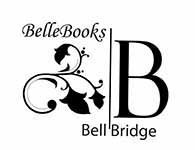 Dive, Mantrap, Gilt Trip, and Swann Song, published by Belle Books. Arlene is a former federal executive with one of those alphabet agencies, who traded the trappings of bureaucracy for the delights of murder most foul. She wisely confines her crimes to fiction. An artful combination of humor, sex, and savagery make Arlene Kay’s mysteries unique.
Dive, Mantrap, Gilt Trip, and Swann Song, published by Belle Books. Arlene is a former federal executive with one of those alphabet agencies, who traded the trappings of bureaucracy for the delights of murder most foul. She wisely confines her crimes to fiction. An artful combination of humor, sex, and savagery make Arlene Kay’s mysteries unique.
Readers: Do you read romantic suspense? For you, what’s the same and what’s different between romantic suspense and cozy mystery?Or pop Arlene a question – she’ll be stopping by throughout the day to answer.
Filed under: Guest posts Tagged: Arlene Kay, Belle Books, Boston Uncommons Mysteries, romantic suspense, Swann novels

September 18, 2014
It’s All A Plot
By Julie, putting away her summer clothes in Somerville
We’ve talked about being a pantser versus a plotter a few times on the blog. (Here, here, and here, for example.) Sherry Harris still talks about the expression on my face when she told me she wrote the end of her book before she wrote the middle. The Clock Shop Mystery series, which I am writing as Julianne Holmes, came with a book bible, which suited me fine. I not only enjoy a roadmap, I require one.
Because, dear friends, I am a plotter. And I’ve got a new toy, er…tool, to help me. Here it is.

Poster Board with dramatic structure guidelines.
I just submitted my first Clock Shop manuscript. I had broken it into scenes, and used Scrivener, but I didn’t pay enough attention to the dramatic structure. This affected the pacing, and the story telling, and got fixed in editing, but still. Yeesh. There had to be a better way for a plotter like me. I read Jessie’s post last week about her process, and was inspired by her use of post-its. I decided to steal the idea, but since I don’t have a blank wall, I bought some poster board, and created a visual image to help me put the scenes in the right places.
This is a combination of the structure The Weekend Novelist Writes a Mystery and the three act dramatic structure narrative I know from theater. A beginning, a middle, more of the middle, and an end. Rising action, climax, falling action. The timing of the inciting incident–the problem that starts the story. Plot points or act turns–moments in the novel that complicate the problem, or reverse the reader’s expectations. The end, when it all comes to a head. And the denouement, where the reader (or audience) can relax a bit, and loose threads are tied up.
I am currently writing scene descriptions on post-its. I am also writing other scene descriptions that probably won’t be in the book (they take place in the past), but they inform the story. And finally, I am describing a few scenes from a subplot I am starting in the first book, want to continue in this book, and conclude in the third book. Once I have finished writing out the scene descriptions, I am going to put them on the board. And I am going to make sure the act breaks (plot points) fall in the right place, and have scenes that turn the action.
Confused? Hour long dramas are a great way to think about dramatic structure. (Law and Order, for example.) What was the hook that drew you into watching? What happens at the fifteen minute mark? What keeps you watching? Were you surprised while watching it? If the story fell apart, when and why?
Any other dramatic structure fans (nerds?) out there? Any fellow plotters?
Filed under: Julie's posts

September 17, 2014
Wicked Wednesday: SINC-Up
Sisters in Crime is sponsoring a September SINC-Up, to spread the good word about good books and their authors. They suggested a few questions, so we’ve selected one for this one and one for the following week. Part of it is also to link to another author’s or authors’ blog, so each of us is doing that, too. The guidelines are here, if you’d like to take part. Just be sure to tweet your link using the hashtag #SinC-up or #SinCBlogHop and include @SINCnational.
The question for today is:
Which male authors write great women characters? Which female authors write great  male characters?
male characters?
Edith: I love Kate Flora‘s Joe Burgess. Also Susan Oleksiw‘s Joe Silva. Both of these police officers are human, fully drawn, conflicted men I could like (a lot) in real life, and they don’t spend much (if any) time commenting on women’s legs and boobs. And I’m holding off on answering the first part, because my stupid brain is refusing to cooperate! Or more likely, it’s that I don’t read male authors much because they don’t write great female characters. But I’m glad to be proven wrong by the rest of you, readers included.
For those of you who love to eat, my SINC-Up this week is the Mystery Lover’s Kitchen blog – new recipes by mystery authors (including regular Wickeds contributor Sheila Connolly) every day!
Jessie: While not a mystery author, I believe Wally Lamb writes women incredibly well. In fact, while I was reading She’s Come Undone I kept turning to the author photo to try to convince myself the author was not a woman. In the mystery world I think Alan Bradley of Flavia de Luce fame does a wonderful job crafting an authentic voice for a young girl.
As to women writing men well, I feel unqualified to answer. I’d like to think the protagonist in Sara Gruen’s Water for Elephants rings true for men. The men in that book with smaller roles felt vivid and believable to me too.
For a blog recommendation I’d like to mention Dru’s Book Musing. She has regular guests, giveaways and reviews. Check it out for yourself!
 Barb: For a man who writes women well, I’m going with Alexander McCall Smith. From Mma Ramotswe and Mma Makutsi of the No. 1 Ladies Detective Agency series, to Isabel Dalhousie to the horrid little girl Olive from the 44 Scotland Street series, they all ring, in some cases hilariously, true. Smith is generous toward all his characters, no matter what their foibles, which is an inspiration to me.
Barb: For a man who writes women well, I’m going with Alexander McCall Smith. From Mma Ramotswe and Mma Makutsi of the No. 1 Ladies Detective Agency series, to Isabel Dalhousie to the horrid little girl Olive from the 44 Scotland Street series, they all ring, in some cases hilariously, true. Smith is generous toward all his characters, no matter what their foibles, which is an inspiration to me.
 Of course, women have written male detectives from the beginning, from Agatha Christie’s Hercule Poirot to Dorothy L. Sayers’ Lord Peter Wimsey to P.D. James’ Dalgliesh to Ruth Rendell’s Wexford. Continuing in that tradition, I have to give my shout out to Louise Penny. Her Gamache has that larger than life edge that makes him a great protagonist, but I often find her portrayal of Jean-Guy Beauvoir most affecting.
Of course, women have written male detectives from the beginning, from Agatha Christie’s Hercule Poirot to Dorothy L. Sayers’ Lord Peter Wimsey to P.D. James’ Dalgliesh to Ruth Rendell’s Wexford. Continuing in that tradition, I have to give my shout out to Louise Penny. Her Gamache has that larger than life edge that makes him a great protagonist, but I often find her portrayal of Jean-Guy Beauvoir most affecting.
Great blog recommendations, Edith and Jessie–two of my faves. I can’t let this first round go by without mentioning the Jungle Red Writers, who have, in one way or another, inspired all the Wicked Cozys.
Edith: Agree about Alexander McCall Smith! Love the Ladies Number One Detective Agency books.
Liz: Harlan Coben does a great job writing women. He’s spot on every time. I just listened to the audiobook of Hold Tight and while he does a great job in all the characters’ heads, the female protagonist is amazingly well done, as are the secondary women characters he writes in this standalone.
As far as women writing men, there are so many to choose from! I do love Julia Spencer-Fleming‘s Russ Van Alstyne in her long-standing series. These books are hauntingly captivating, and while the plots are terrific, it’s the characters that drive the books.
Along with the three blogs above, I also love Killer Characters, a fun blog spanning a wide range of authors including our own Jessie Crockett with a regular gig. All posts are written from a character’s perspective. Check it out!
Sherry: I love J.A. Jance’s J.P. Beaumont series set in Seattle. He’s flawed and authentic. Craig Johnson does a great job portraying Victoria Moretti and other women in his Longmire series. I’m so excited he will be at Crime Bake this year. Barbara Ross also blogs on the great Maine Crime Writers blog. It is about so much more than Maine and crime writing!
Readers: add your response!
Filed under: Wicked Wednesday Tagged: #sinc-up, Alan Bradley, Alexander McCall Smith, Craig Johnson, Crime Bake, Dru's Book Musing, J.A. Jance, Joe Burgess, Joe Silva, kate flora, louise penny, Maine Crime Writers, Mystery Lovers Kitchen, Sara Gruen, Sisters in Crime Sinc-up, Susan Oleksiw, Wally Lamb

September 16, 2014
The Detective’s Daughter — This Girl for Hire
Well, it’s happened. My first short story, Boardwalk Bound, will appear in the anthology The Boardwalk by Cat and Mouse Press. I will be enjoying myself at Crime Bake the day it comes out. My dad would be impressed (but not too much) that I’d actually completed a project I’d started. He always told me I made things harder than they had to be. I deciphered this to mean if I would only do what he told me to do, it would be much better for me.
 When I graduated from high school, my dad helped me out by getting me a job in his building. I was very excited to be going to work with him at police headquarters. I pictured myself helping to solve cases, answering phones, or filing reports…until he dropped me off at the morgue. The Morgue!!!! He couldn’t understand what my problem was, after all, I had the entire place to myself, well, not counting the dead people. I could read books all day and drink coffee. (He knew how much I loved to read.) My only job was to fingerprint the deceased. Easy peasy — according to my dad. More like easy-queasy! I lasted three days (someday I’ll tell you what happened on that third day). Years later he never failed to remind me of the pension I could have had if only I’d done as he said. And how I always made things harder than they needed to be.
When I graduated from high school, my dad helped me out by getting me a job in his building. I was very excited to be going to work with him at police headquarters. I pictured myself helping to solve cases, answering phones, or filing reports…until he dropped me off at the morgue. The Morgue!!!! He couldn’t understand what my problem was, after all, I had the entire place to myself, well, not counting the dead people. I could read books all day and drink coffee. (He knew how much I loved to read.) My only job was to fingerprint the deceased. Easy peasy — according to my dad. More like easy-queasy! I lasted three days (someday I’ll tell you what happened on that third day). Years later he never failed to remind me of the pension I could have had if only I’d done as he said. And how I always made things harder than they needed to be.
By the next year he’d lined up another job for me. This time as a court stenographer. When I informed him I couldn’t type, he rolled his eyes and loudly proclaimed my tuition had been a waste of money. If only I had taken these jobs seriously, think of the material I’d have for my stories. He may not have found me the perfect job, but he certainly put me on the path to a career I love. Thanks Dad.
Filed under: The Detective's Daughter Tagged: court stenographer, The Boardwalk

September 15, 2014
The Evolution of a Title
By Sherry Harris, enjoying lovely fall weather in northern Virginia
Jessie recently talked about and her joy in naming characters. Some of my characters seem to show up with names. With others I have a much harder time finding the right name. I just finished the second Sarah Winston Garage Sale Mystery. I had one character named Blank and one named Place until the month before I turned in the manuscript. They became Olivia and Gennie. It isn’t only naming characters that gives me trouble but also titles.
I love all the cleverly named books that are plays on words. Edith’s book A Tine to Live A Tine to Die was named as one of the punniest cozy mystery titles of the year by RT Book Reviews. You can read their picks of clever titles here: The Punniest Cozy Mystery Titles. Liz has Kneading to Die, Barb, Clammed Up and Jessie, Drizzled with Death. Julie — we’ll find hers out soon enough. It seems like there are plenty of clever things Julie will be able do with a theme of time.
 The title for the first book in the series, Tagged for Death, came to me easily. It references tag sales (a New England term for garage sales), the tags on yard sale items, and the person who is targeted to die. In my proposal the second book was titled “Marred Sale Madness”. I thought marred was a decent rhyme with yard. As I started talking about the book and telling people the title they always said, “What?” Some people thought I was saying “March,” others just didn’t understand. Then I’d have to carefully enunciate the word, M-a-r-r-ed. I don’t know if it’s my Midwest nasal tones or it’s just that hard to say, but I decided a new title was in order.
The title for the first book in the series, Tagged for Death, came to me easily. It references tag sales (a New England term for garage sales), the tags on yard sale items, and the person who is targeted to die. In my proposal the second book was titled “Marred Sale Madness”. I thought marred was a decent rhyme with yard. As I started talking about the book and telling people the title they always said, “What?” Some people thought I was saying “March,” others just didn’t understand. Then I’d have to carefully enunciate the word, M-a-r-r-ed. I don’t know if it’s my Midwest nasal tones or it’s just that hard to say, but I decided a new title was in order.
At the Wicked Cozy retreat last April I told the Wickeds that I needed a new title but was drawing a blank. Barb came up with Deal or Die. I liked it and wrote my editor asking if that was okay. He agreed it was. But as time approached to turn the second book in my editor decided to go another direction and titled the book “The Longest Yard Sale”. It’s cute and fun. I double checked on Amazon to see if there were any other books with a similar names. I found: The Longest Yard Sale by Sherry Harris available for pre-order! It comes out June 30, 2015.
The third book’s working title is: Murder As Is. I have a feeling that might change too.
Readers: Does the name of a book influence your decision to read it? How do you come up with titles? Do you have a favorite?
Filed under: Sherry's posts Tagged:
September 12, 2014
Ask The Expert — Private Investigator John Nardizzi
We met John last year at Crime Bake. Thanks so much for joining us today, John.
 Name: John Nardizzi
Name: John Nardizzi
Area of Expertise: I’m a private investigator who handles criminal defense and civil cases. Interviewing witnesses and background research are the main tasks I undertake.
How did you become a private investigator?
I didn’t know the profession really existed. I was in law school and went to a seminar on different careers for law school graduates. There was a private investigator on the panel and he described a career that offered a mixture of investigative reporting and legal work. For a small group of us, the discussion was enthralling. He bashed the legal profession over and over, poking fun at the narrow intelligence of many lawyers. For a year, I called the agency every few weeks, talking to the receptionist, asking to meet with him. I never got a single response. But I just kept calling. One afternoon I got a call from the receptionist who told me the boss was talking about me: I was either too dumb or too stubborn to take a hint, but he liked my persistence. Eventually they needed an Italian guy to talk to another Italian guy. I fit the profile.
What are 3 things we should know about your area of expertise?
When people hear you work as a private investigator, they always say, “I would be a great PI, I can talk to anyone!” They are mistaken: they would make a great witness. The PI in the room is the guy–or woman–who is quietly getting everyone else to talk.
Witness is a word with both religious and legal connotations, which gives you a sense of the importance of witness testimony in our legal system. This is true in criminal cases especially. Forensics impacts so many cases we handle now. But witnesses make the case.
PI work is a strange little corner of the legal world and attracts some very smart people—but also some of the wackiest. I know PIs who were investigative reporters, college professors. But the middle class is very small. One of the preeminent PIs on the West Coast, Hal Lipset, said, “In the detective business, you’re either a hero or a bum.” That’s why a creative amateur can do quite well. If you get results, no one asks where you went to college.
What do people usually get wrong when writing about private investigators?
At the Left Coast Crime conference, someone raised a topic: is the private detective novel being replaced by lawyers/legal thrillers? One writer said the detective novel is passe because because modern PIs just sit behind a desk doing research. Dead wrong. PIs are out there interviewing witnesses on major cases all over the world—fraud, civil rights cases, criminal defense. Many lawyers outside the courtroom come off as very stiff with witnesses, and they are not usually the most creative personalities. So all these bestsellers where the lawyer is doing the investigation? Might be a secret dream, but in real life, it doesn’t happen that way.
Is there a great idea you’d love to share?
A good investigator, whether professional or amateur, can watch and listen to you speak and get a sense about whether you are lying. But there is no one foolproof method to do this. So while the art of reading people is a real skill, most crime novels oversimplify the process.
What are you working on?
My second crime novel is based on a case I worked on in Boston involving a man who spent decades in prison for a crime he did not commit. My detective, Ray Infantino lowers the boom on police informants and corrupt cops. He also roams into some cafes and restaurants too, of course. This is true of both real and fictional sleuths: we eat out a lot.
 Do you use your expert knowledge in your writing?
Do you use your expert knowledge in your writing?
Yes, I try to use insights gleaned from years of interviewing people to craft scenes that have some psychological layers. The PI and witness verbally jabbing and feinting. Things that are said, things that are left out. I’ve worked in 26 states and met people I would never have had a chance to meet otherwise—men who were wrongfully convicted, Native Americans on reservations, con men, women who fall in love with con men. During the interviews, you learn what you need for the case. But as a writer, you always see something–a phrase, a gesture, a little story–that is just for you.
Readers: John will be stopping in to answer questions as his schedule allows. What did you always want to know about being a private investigator?
John Nardizzi is an investigator, lawyer, and writer. His writings have appeared in numerous professional and literary journals, including San Diego Writers Monthly, Oxygen, Liberty Hill Poetry Review, Lawyers Weekly USA, and PI Magazine. His fictional detective, Ray Infantino, first appeared in print in the spring 2007 edition of Austin Layman’s Crimestalker Casebook. Telegraph Hill is the first crime novel featuring Infantino.
In May 2003, John founded Nardizzi & Associates, Inc., an investigations firm that has garnered a national reputation for excellence in investigating business fraud and trial work. His investigations on behalf of people wrongfully convicted of crimes led to several million dollar settlements for clients like Dennis Maher, Scott Hornoff and Kenneth Waters, whose story was featured in the 2010 film Conviction.
Filed under: Ask the Expert Tagged: Boston, Hal Lipset, John Nardizzi, lawyers, Nardizzi and Associates, private investigators, Telegraph Hill


